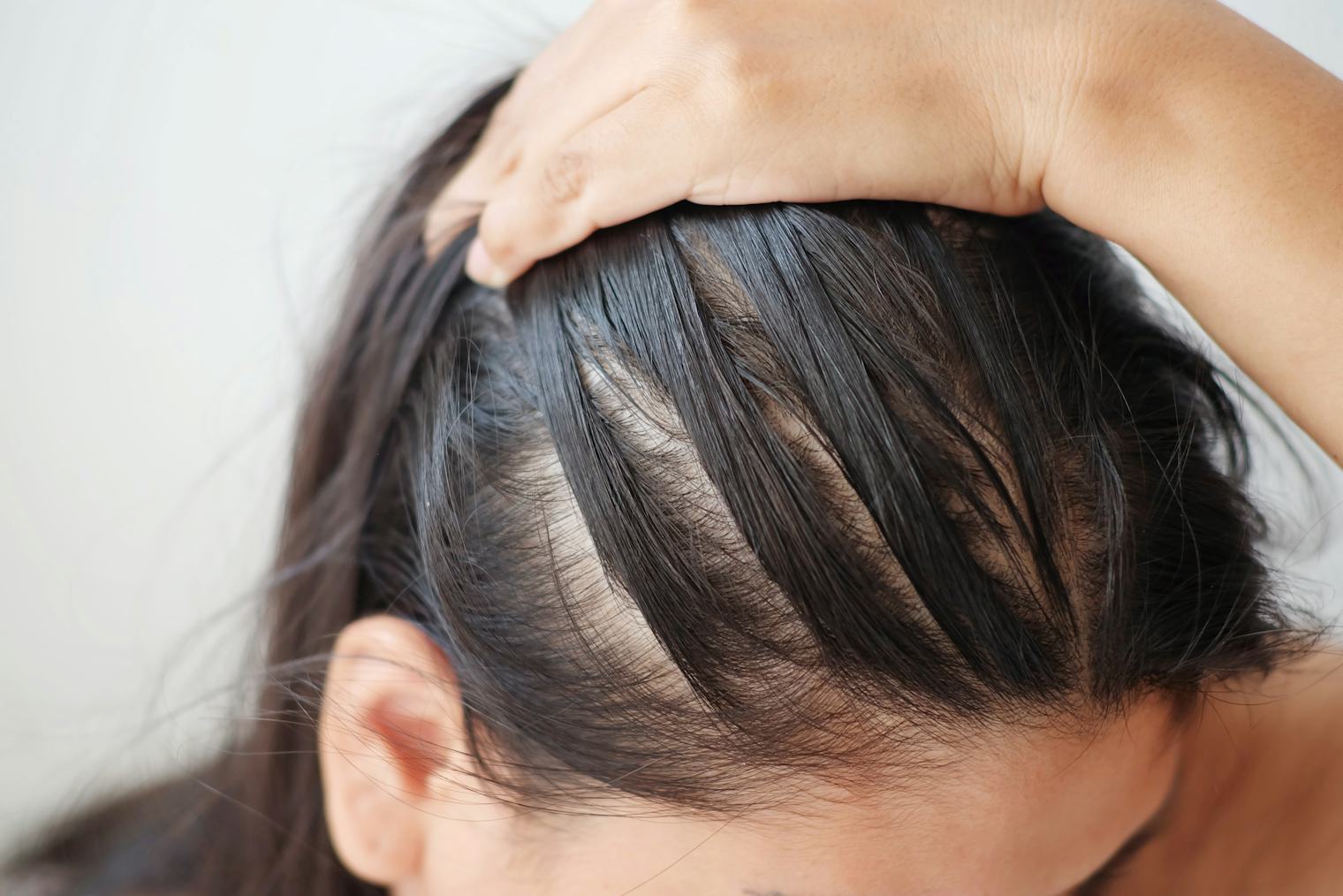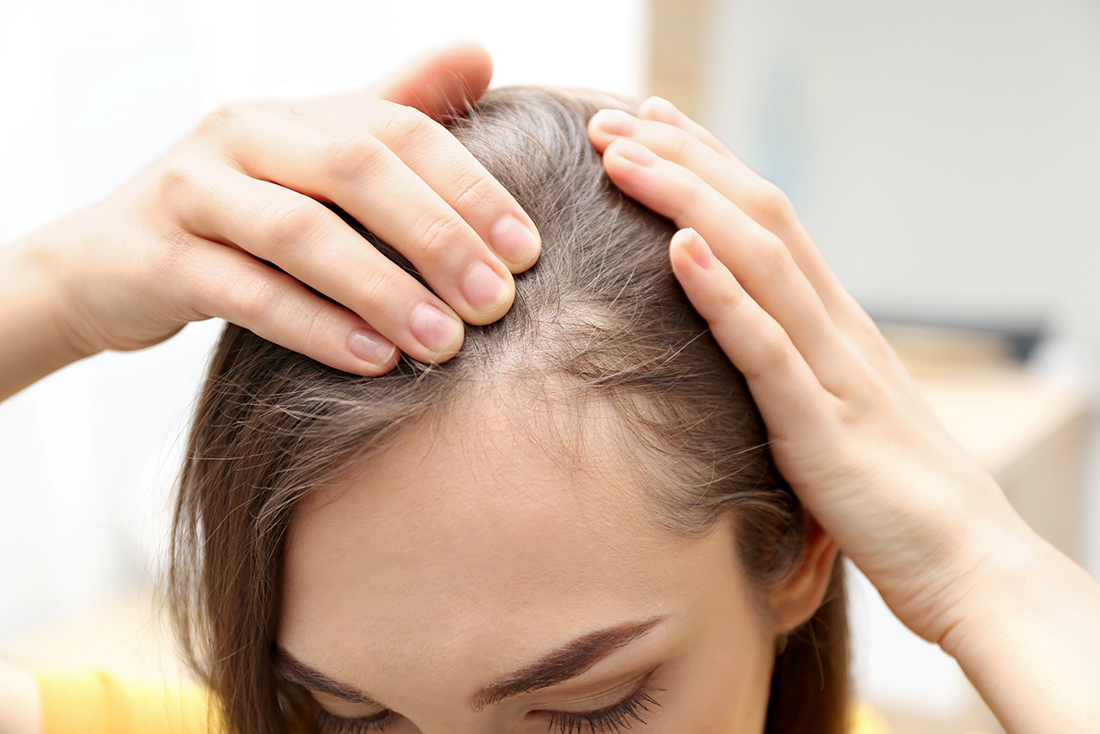
Hair loss and thinning are common concerns for many individuals, regardless of age or gender. Losing between 50 and 100 hairs per day is considered normal. However, when hair loss becomes more noticeable or permanent, it can impact one’s self-esteem and overall well-being. Understanding the causes, diagnosis, and treatment options can help individuals navigate through this experience. This comprehensive guide will provide valuable information on hair loss and thinning, enabling you to make informed decisions about your hair health.
Language Matters
The first step in understanding hair loss is to familiarize yourself with the proper terminology. Hair loss can be categorized into different types, depending on the underlying cause. Each type requires a specific approach for diagnosis and treatment. Here are some key terms you should know:
Androgenic Alopecia
Androgenic alopecia, also known as male or female pattern baldness, is one of the most common causes of hair loss. It is characterized by a gradual reduction in hair volume, usually starting at the hairline or crown of the head. This type of hair loss is primarily influenced by genetics and hormonal changes, and it tends to progress over time.
Alopecia Areata
Alopecia areata is an autoimmune condition that results in hair loss in patches. It occurs when the immune system mistakenly attacks the hair follicles, leading to hair loss. This type of hair loss can be unpredictable, with periods of regrowth and relapse. The exact cause of alopecia areata is still unknown, but it is believed to be related to both genetic and environmental factors.
Anagen Effluvium
Anagen effluvium is a type of hair loss characterized by the sudden shedding of hair during the anagen (growth) phase. This condition is often caused by exposure to toxins, such as chemotherapy drugs or radiation therapy. Anagen effluvium can result in significant hair loss within a short period.
Telogen Effluvium
Telogen effluvium is a common type of hair loss that occurs when a significant number of hair follicles enter the telogen (resting) phase, leading to excessive shedding. This condition can be triggered by various factors, including hormonal changes, physical or emotional stress, nutritional deficiencies, certain medications, and medical conditions.
Tinea Capitis
Tinea capitis, also known as scalp ringworm, is a fungal infection that can cause hair loss. It typically affects children and is characterized by scaly patches on the scalp, accompanied by itching and hair breakage. Prompt treatment is essential to prevent the spread of the infection and minimize hair loss.
Traction Alopecia
Traction alopecia is hair loss due to repeated tension or pulling on the hair. This type of hair loss is commonly seen in individuals who frequently wear tight hairstyles, such as braids, ponytails, or extensions. Over time, the constant pulling can damage the hair follicles, resulting in permanent hair loss.
Photos of Hair Loss

Visual representations of hair loss can be helpful in understanding the different types and severity of hair loss. The images above depict various stages and patterns of hair loss. It’s essential to remember that everyone’s experience with hair loss is unique, and consulting with a healthcare professional is crucial for an accurate diagnosis and personalized treatment plan.
How is Hair Loss Diagnosed?
Diagnosing hair loss involves a comprehensive approach, including a physical examination, medical history review, and sometimes a biopsy. During the physical examination, your healthcare provider will assess the pattern and severity of hair loss, examine the scalp, and look for any signs of inflammation or other hair abnormalities. In addition to the examination, providing your medical history, including any family history of hair loss or underlying medical conditions, can provide valuable insights into the potential causes of your hair loss.
In certain cases, a scalp biopsy may be recommended to confirm the diagnosis or rule out other underlying conditions. During a scalp biopsy, a small sample of the scalp tissue is extracted and examined under a microscope. The findings from the physical examination, medical history, and scalp biopsy (if performed) will collectively help determine the cause of your hair loss and guide the appropriate treatment plan.
What are the Treatment Options for Hair Loss?
Treatment options for hair loss vary depending on the underlying cause and the severity of the condition. Here are some common approaches to managing hair loss:
Medications: Certain medications, such as minoxidil (Rogaine) and finasteride (Propecia), may be prescribed to slow down hair loss or stimulate hair regrowth. These medications are generally used for androgenic alopecia and require consistent and long-term use to maintain the desired effects.
Hair Transplant Surgery: For individuals with significant hair loss, hair transplant surgery can be an effective option. This procedure involves moving healthy hair follicles from one part of the body (often the back or sides of the scalp) to the areas with thinning or no hair. Hair transplant surgery can provide long-lasting and natural-looking results.
Lifestyle Changes: Adopting a healthy lifestyle can positively impact hair health. Eating a balanced diet, managing stress levels, avoiding harsh hair treatments, and practicing good hair care habits can help minimize hair loss and promote healthy hair growth.
It’s crucial to consult with a healthcare professional to determine the most suitable treatment options based on your specific needs and medical history.
How Can I Prevent Hair Loss?
While it may not be possible to prevent all types of hair loss, implementing certain measures can help minimize the risk or slow down the progression. Here are some tips for maintaining healthy hair:
1. Follow a nutritious diet that includes essential vitamins and minerals for hair health, such as biotin, iron, zinc, and vitamins A, C, and E.
2. Avoid applying excessive heat or using harsh chemicals on your hair.
3. Incorporate stress-management techniques into your daily routine, such as meditation, exercise, or engaging in hobbies you enjoy.
4. Be gentle with your hair when styling, brushing, or washing to avoid unnecessary breakage.
5. Seek prompt treatment for any scalp conditions or underlying medical conditions that could contribute to hair loss.
While these measures can support healthy hair growth, it’s essential to remember that genetics and other factors beyond your control can also influence hair loss. Regular check-ups with a healthcare professional can help monitor your hair health and address any concerns.
When to See a Doctor About Hair Loss
If you experience significant or sudden hair loss, it is advisable to consult with a healthcare professional. They can help determine the underlying cause of your hair loss and develop an appropriate treatment plan. Additionally, seeking medical advice is crucial if you notice any of the following:
- Hair loss accompanied by redness, swelling, or pain on the scalp
- Scaly patches or bald spots on the scalp
- Hair loss that is progressing rapidly
- Changes in hair texture or color
- Significant hair loss after starting a new medication
Remember, early intervention and accurate diagnosis are key to successful management of hair loss.
Frequently Asked Questions About Hair Loss and Thinning
Which vitamin can help with hair loss?
Vitamin deficiencies, such as biotin, iron, and zinc, can contribute to hair loss. Supplementing with these vitamins, either through diet or specific supplements, may help promote healthy hair growth. However, it’s essential to consult with a healthcare professional to determine the right dosage and suitability for your needs.
What illness causes hair loss?
Various medical conditions can cause hair loss, including thyroid disorders, autoimmune conditions (such as alopecia areata), nutritional deficiencies, and hormonal imbalances. If you suspect an underlying medical condition is contributing to your hair loss, it is recommended to consult with a healthcare professional for proper evaluation and management.
Is it possible to stop hair loss indefinitely?
The possibility of stopping hair loss indefinitely depends on the underlying cause. Certain types of hair loss, such as androgenic alopecia, may have ongoing management requirements to slow down hair loss and maintain hair growth. However, for other types of hair loss, such as alopecia areata, remission and relapse phases are common, and the hair loss may be unpredictable. Consulting with a healthcare professional can provide better insights into the prognosis and management options for your specific condition.
Conclusion
Hair loss and thinning can be distressing, but with proper understanding and guidance, there are various treatment options available to manage and address this concern. It’s important to remember that everyone’s experience with hair loss is unique, and the most effective approach to diagnosis and treatment can vary from person to person. If you are experiencing hair loss or thinning, we encourage you to consult with a healthcare professional who specializes in hair health to determine the most suitable solutions for you. By taking proactive steps and seeking professional advice, you can regain confidence and optimize your hair health.